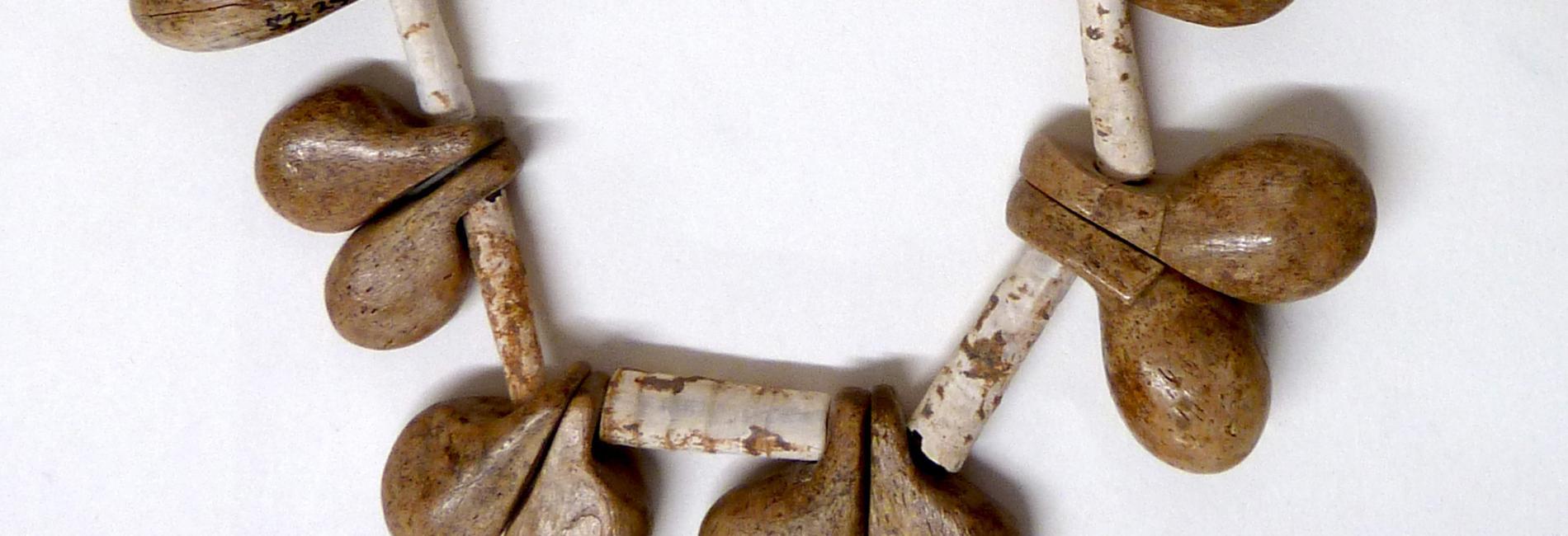John Hodgson's poem Transition is inspired by a pair of prehistoric necklaces unearthed during excavations led by pioneering archaeologist Dorothy Garrod (1892-1968) at Mount Carmel in Israel in the 1930s.
The necklaces are now in the collection of the Museum of Archaeology and Anthropology. Garrod became the first female professor in the history of the University of Cambridge.
John writes,
"Dorothy Garrod admits that the assembly of the necklace, originally at least, was a guess, there being no evidence for any thread to tie the assembly together. Equally there is no evidence beyond precedents that straight men make better professors of archaeology or knappers of flint or carvers of bone. The Natufian culture was a transition between nomadic and more settled existences. The era of gendered work privilege may be equally transitory in the historical record."
Guest Curator Marenka Thompson-Odlum reflects,
"I chose this poem because, at its core, while it acknowledges Dorothy Garrod and Francis Turville-Petre's intrepidity as respectively being an early female archaeologist and openly gay archaeologist, it also illustrates how their marginality did not preclude them from imposing Eurocentric ideas, meanings, and terminologies onto the shell and bone necklaces found at the Mount Carmel site in Israel.
The echoing of the poem made me think of the various layers of erasure that have surrounded these necklaces, each getting fainter and fainter with time. The erasure is a literal echo left behind the negative impression referenced by Hodgson, the histories of these necklaces being rewritten by these pioneers at the very same time that the same patriarchy and Eurocentric systems that erases the necklaces is erasing Garrod and Turville-Petre's stories."
This track is part of the Museum Remix: Unheard project.



